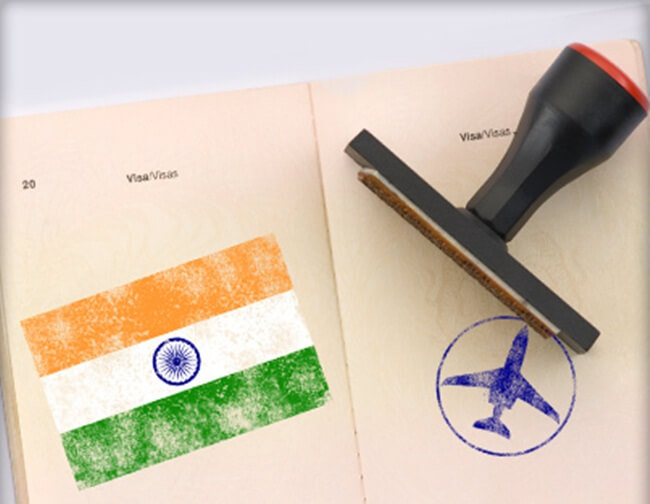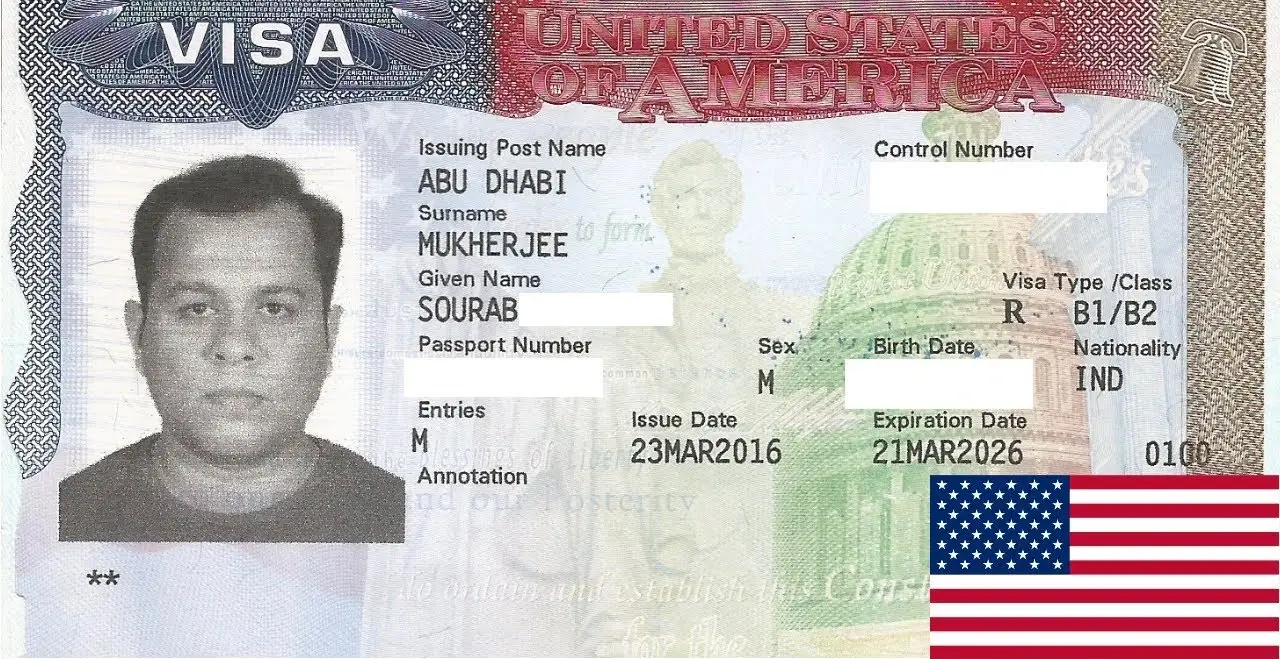Unlocking Opportunities: Essential Details on US Visas for Indian People
Maneuvering the complexities of U.S. visa alternatives is vital for Indian people aiming to discover chances in the United States. With various categories varying from momentary visitor visas to pathways for permanent residency, recognizing the subtleties of each can noticeably impact one's journey. This conversation will highlight important info, consisting of application treatments and eligibility standards, that can empower individuals in their quest of brand-new experiences. As we unpack these vital elements, the inquiry develops: what approaches can one utilize to improve their chances of an effective application?
Overview people Visa Types
When passing through the complicated landscape of United States immigration, understanding the different kinds of visas readily available is vital for Indian citizens looking for access into the United States (US Visas For Indian Citizens). The United States migration system is mainly classified into two wide classifications: immigrant visas and non-immigrant visas
Immigrant visas are marked for those meaning to live completely in the United States. These consist of family-sponsored and employment-based visas, where candidates typically call for a sponsor. Non-immigrant visas, on the various other hand, provide to individuals seeking momentary residence, such as vacationers, company visitors, and those traveling for details objectives like job or research.
Within the non-immigrant classification, several visa types exist, including B-1/ B-2 for business and tourist, H-1B for specialized occupations, L-1 for intra-company transferees, and O-1 for individuals with phenomenal abilities. Each visa has distinct eligibility demands and application processes, demanding detailed study to figure out the appropriate classification.
Recognizing these classifications is essential for Indian citizens, as it enables them to navigate the application procedure extra successfully, guaranteeing they select the right visa type to fulfill their particular demands and purposes. US Visas For Indian Citizens.
Pupil Visa Options
For Indian residents aspiring to study in the United States, trainee visas present an essential path to seek scholastic opportunities. The main visa categories for students are the F-1 and M-1 visas.
The F-1 visa is assigned for academic students enlisted in a full-time program at an approved organization, such as universities and colleges. This visa allows trainees to participate in on-campus work and, under specific problems, take part in optional functional training (OPT) after finishing their level, offering useful job experience in their discipline.
On the other hand, the M-1 visa is meant for trade or non-academic programs. It accommodates pupils pursuing technological or professional training, permitting them to sign up in non-degree programs. M-1 visa holders may take part in useful training, but it is usually much more limited compared to the F-1 category.
To obtain a pupil visa, applicants need to safeguard admission to a united state institution, obtain a Form I-20, and demonstrate financial ability to sustain their education and living costs. Understanding these visa choices is substantial for Indian residents planning to start their educational trip in the United States.
copyright Categories
Many Indian citizens seeking job opportunity in the United States might think about various job visa classifications tailored to various professional demands and credentials. The most prominent copyright is the H-1B visa, designed for skilled employees in specialized occupations needing a greater education and learning degree or its equivalent. It allows united state employers to briefly utilize foreign employees, with a cap on the number of visas issued annually.
Another crucial category is the L-1 visa, which helps with the transfer of staff members within international companies. The L-1A visa is for supervisors and executives, while the L-1B visa is for employees with specialized knowledge.
The O-1 visa accommodates individuals with extraordinary abilities in their field, consisting of scientific research, arts, or organization. For farming or seasonal job, the H-2A and H-2B visas are readily available, permitting employers to hire foreign workers for temporary positions.
Family-Based Migration
Family-based migration supplies a pathway for U.S. citizens and authorized irreversible citizens to rejoin with their family members from India. This migration category is essential for maintaining domestic bonds and promoting the integration of relative into American society. United state citizens can petition for instant relatives, including spouses, kids, and moms and dads, without dealing with yearly restrictions on visas. This expedited process considerably reduces waiting times for these close family connections.
In contrast, legal permanent locals may fund spouses and single children, but they undergo yearly caps, causing much longer wait times. The family-sponsored immigration system is divided into two main categories: prompt family members and household preference groups. The former includes those that have a direct partnership with a united state resident, while the last incorporates more distant relatives, such as siblings and wedded children of citizens, and youngsters of authorized irreversible homeowners.
For Indian citizens seeking family-based migration, comprehending the subtleties of this system is critical. Proper paperwork and adherence to application protocols are essential for successful sponsorship. By maneuvering through these complexities, family members can work towards reuniting and developing their lives with each other in the United States.
Permanent Residency Process
The process of getting permanent residency in the United States entails a number of essential visa categories customized for Indian people. Understanding the application actions, including essential documents and eligibility requirements, is important for a successful outcome. Furthermore, prospective applicants must be mindful of the anticipated timeline and details needs related to each group.
Visa Categories Review
While going across the intricacies of the united state immigration system, Indian citizens seeking permanent residency has to acquaint themselves with different visa classifications tailored to different circumstances. The primary pathway for permanent residency is via employment-based visas, which are classified right into numerous choices, consisting of EB-1 for individuals with extraordinary capacities, EB-2 for specialists holding postgraduate degrees, and EB-3 for skilled workers. Each group has details qualification requirements and handling times.

Variety visas, although restricted in number, offer an opportunity for people from underrepresented nations to get permanent residency via a lottery game system. Furthermore, altruistic alternatives such as asylum and refugee status deal paths for those dealing with persecution.
Recognizing these visa classifications is essential for Indian people, as they considerably influence the approach for acquiring irreversible residency in the United States. Each category's subtleties and demands require cautious factor to consider to straighten with specific conditions and objectives.
Application Process Steps
Steering the application process for irreversible residency in the United States entails several crucial actions that have to be diligently complied with to ensure a successful end result. The journey generally begins with establishing the appropriate migration classification, such as employment-based or family-sponsored visas. Candidates must gather crucial documents, consisting of evidence of qualification, economic statements, and personal recognition.
As soon as the category is determined, the following action is to file the Type I-130 (Request for Alien Loved One) or Form I-140 (Immigrant Request for Alien Worker), depending upon the basis of the application. Complying with the authorization of the request, applicants will certainly require to finish the National Visa Center (NVC) processing by submitting the needed costs and forms.
Next off, the applicant should go through a medical checkup and obtain police clearance certificates. When these are finished, a meeting will be scheduled at the U.S. consulate or embassy. It is essential to prepare extensively for this meeting, as it can greatly impact the decision on the application. Upon approval, the applicant will certainly obtain their visa, providing them irreversible residency in the United States.
Timeline and Needs
Charting the timeline and requirements for getting irreversible residency in the USA is essential for Indian people seeking to develop a long-term presence. The procedure largely pivots on employment-based or family-sponsored pathways, each with particular prerequisites and timelines.
For employment-based migration, the procedure normally starts with a labor qualification, which can take numerous months. As soon as authorized, the company submits a Type I-140, Immigrant Petition for Alien Employee, which can take an additional six months to a year, depending on the processing facility. Adhering to I-140 authorization, applicants might need to wait for their concern date to come to be present, which can differ significantly based upon the applicant's classification and native land.
For family-sponsored immigration, united state people can request for instant relatives, which generally causes faster handling. Various other family groups may include much longer wait times due to yearly caps.
Application Procedures
Understanding the application treatments for United States visas is crucial for Indian residents looking for access into the USA. US Visas For Indian Citizens. This area will certainly offer a summary of various visa groups and describe the detailed procedure for applying. By adhering to these guidelines, applicants can navigate the intricacies of the visa effectively
Visa Categories Review
Navigating the various visa classifications available to Indian people can be a complex procedure, however it is important for those looking for to travel, function, or study in the USA. The U.S. visa system is classified primarily into non-immigrant and immigrant visas, each offering unique objectives.
Non-immigrant visas, such as B-1/ B-2 for company and tourist, F-1 for scholastic study, and H-1B for specialized employment, enable short-lived stays. Applicants have to show their intent to return to India after their see.
On the other hand, immigrant visas, including family-sponsored and employment-based classifications, give a path to permanent residency. These visas commonly require sponsorship from a family member or company in the U.S., together with a strenuous application process.

Step-by-Step Process
Typically, the application process for U.S. visas involves a number of important steps that candidates must carefully comply with to ensure a smooth experience. The initial action is to figure out the proper visa classification based on the function of travel, such as work, study, or tourism. Once the category is identified, applicants must finish the on the internet DS-160 kind, providing accurate individual information and traveling information.
After sending the DS-160, candidates ought to pay the visa fee, which differs by visa kind. Next, set up a consultation for a visa meeting at the closest U.S. Consular office or Consular Office. Types Of US Visas. It is crucial to prepare for the interview by celebration called for papers, including a valid copyright, visa verification, cost settlement invoice, and any type of sustaining documents details to the visa classification
On the day of the interview, arrive promptly and dress suitably. During the interview, be prepared to address inquiries regarding your travel purposes, monetary stability, and connections to India. Ultimately, if authorized, the visa will be marked in the ticket, permitting traveling to the United States. Complying with these actions guarantees an efficient and efficient copyright process for Indian people.
Tips for a Successful Application

Ensure that all types are finished accurately and honestly. Tiny mistakes or omissions can bring about delays or even rejections. It is advisable to collect all required sustaining files, including monetary declarations, work letters, and proof of connections to India, which show your intent to return post-visit.
Plan for your visa interview by exercising feedbacks to usual concerns connected to your traveling strategies and history - US Visa Categories India. Confidence and clearness can significantly affect the officer's impression. Ultimately, take into consideration seeking aid from reliable immigration experts if you really feel overloaded
Often Asked Inquiries
What Are the Handling Times for US Visa Applications?
Processing times for U.S. visa can vary considerably based upon the visa type, application quantity, and the applicant's area - US Visas For Indian Citizens. Generally, candidates ought to expect a processing duration ranging from a couple of weeks to numerous months
Can I Modification My Visa Standing While in the United States?
Yes, people can transform their visa condition while in the USA, given they meet eligibility requirements and adhere to appropriate treatments. It is critical to submit the ideal application with united state US Visa Requirements Citizenship and Migration Solutions (USCIS)
Are There Age Purview for US Visa Applicants?
There are normally no particular age restrictions for united state visa applicants; however, particular visa groups might have age-related qualification requirements. It is very important to examine the requirements for each and every visa kind to guarantee compliance.
What Are Usual Factors copyright Denial?
Common reasons copyright denial include not enough economic resources, failing to show connections to the home nation, insufficient application types, absence of proper documents, previous immigration infractions, and failing to fulfill qualification criteria for the specific visa category.
How Can I Appeal a Visa Rejection Choice?
To appeal a visa denial, assess the consular policeman's reasons, gather sustaining paperwork, and send an official allure to the suitable authority, making sure to stick to defined timelines and procedural requirements for the allure procedure.